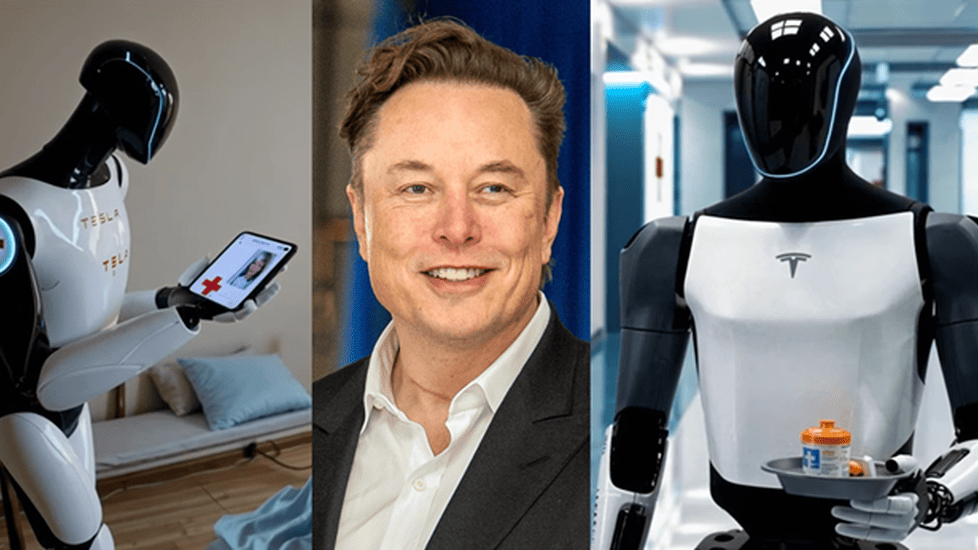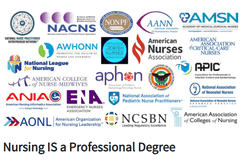Elon Musk Says New Tesla Optimus Robot Could be a Nurse


Image sources: Wikipedia, Techno Creators
Podcast Episode
Elon Musk recently announced that Tesla’s Optimus humanoid robot could soon serve as a full-time, 24-hour nurse or helper, especially in environments where the work is very dangerous or highly repetitive. Unveiled in a July 27, 2025 interview with Tesla owners in Silicon Valley, Musk described a world where robots work side by side with nurses, handle hazardous tasks, and provide crucial support for patients who need physical assistance.
What Is the Tesla Optimus Nursing Robot?
- Optimus Gen 3 is Tesla’s latest humanoid robot, powered by advanced artificial intelligence (Grok 3) and designed with real-time health monitoring as a core feature.
- The robot can allegedly analyze millions of medical data points in seconds, adjust care routines on the fly, and even handle complex tasks—such as patient lifting, equipment repositioning, and possibly administering basic medical interventions.
- The Optimus robot includes a suite of high-res cameras and sensors to navigate busy environments and interact with patients and staff safely.

What Did Elon Musk Say?
- In his recent statements, Musk emphasized that Optimus “could be like a 24 hour day nurse or helper to someone who needs physical help.”
- He further suggested robots like Optimus would be ideal “in situations where the work is very dangerous,” referencing scenarios such as infectious disease outbreaks, hazardous-material cleanup, or repetitive lifting in care homes.
- Musk’s vision represents Tesla’s growing focus beyond vehicles—into daily life, healthcare, and potentially the future workplace for nurses and allied health professionals.
What Are the Opportunities—and Challenges—for Nurses?
Opportunities:
- Support in Hazardous Situations: Robots can take on tasks where infection, injury, or burnout risk is high, allowing nurses to focus on clinical decision-making and emotional care.
- 24/7 Physical Assistance: For patients needing frequent help moving, lifting, or repositioning, a robot nurse could reduce strain for human caregivers and improve response times.
- Efficiency: Optimus could automate documentation, vital-sign collection, and routine observations, easing workloads during nurse shortages.
Challenges, Concerns, and Questions:
- Safety and Reliability: Despite robust design and real-time AI, any malfunction or misinterpretation could cause harm. Cybersecurity, programming errors, and unpredictable situations remain live issues.
- Patient Interaction: Robots may help with physical tasks but lack the empathy, adaptability, and communication skills core to nursing care.
- Scope of Practice: Regulatory frameworks will need to clarify what robots can and cannot do in licensed care settings.
- Workforce Implications: While robots could ease workloads, nurses may worry about job displacement or “depersonalization” of care.
@nurse.org Elon Musk recently announced that Tesla’s Optimus humanoid robot could soon serve as a full-time, 24-hour nurse or helper, especially in environments where the work is very dangerous or highly repetitive. Unveiled in a July 27, 2025 interview with Tesla owners in Silicon Valley, Musk described a world where robots work side by side with nurses, handle hazardous tasks, and provide crucial support for patients who need physical assistance. ➡️ You can find the article at nurse.org/news or click the LINK IN BIO! #news #tesla #robot #nurse #elonmusk ♬ original sound - nurse.org
Vision and Production Delays
Elon Musk says his vision of Tesla’s Optimus robot as a full-time, 24-hour nurse is fast approaching reality, especially for roles that are hazardous, physically demanding, or highly repetitive. For nurses, this technological shift could enhance safety and efficiency, but also raises vital questions about safety, ethics, and the future of compassionate care.
However, the Optimus robot has faced significant production delays and stability issues. Key challenges include difficulties achieving human-like hand dexterity, hardware flaws such as overheating joints and limited battery life, and a recent leadership change that paused production for design revisions. These problems have slowed mass production far below initial targets of 5,000 robots by the end of 2025. Currently, the few robots produced are used experimentally and have not yet matched human performance or reliability. Resolving these technical hurdles is critical before Optimus can reliably serve in demanding roles like nursing.
🤔 Nurses, what do you think about a potential Telsa robot performing nursing functions? Share your thoughts in the discussion forum below.
If you have a nursing news story that deserves to be heard, we want to amplify it to our massive community of millions of nurses! Get your story in front of Nurse.org Editors now - click here to fill out our quick submission form today!




